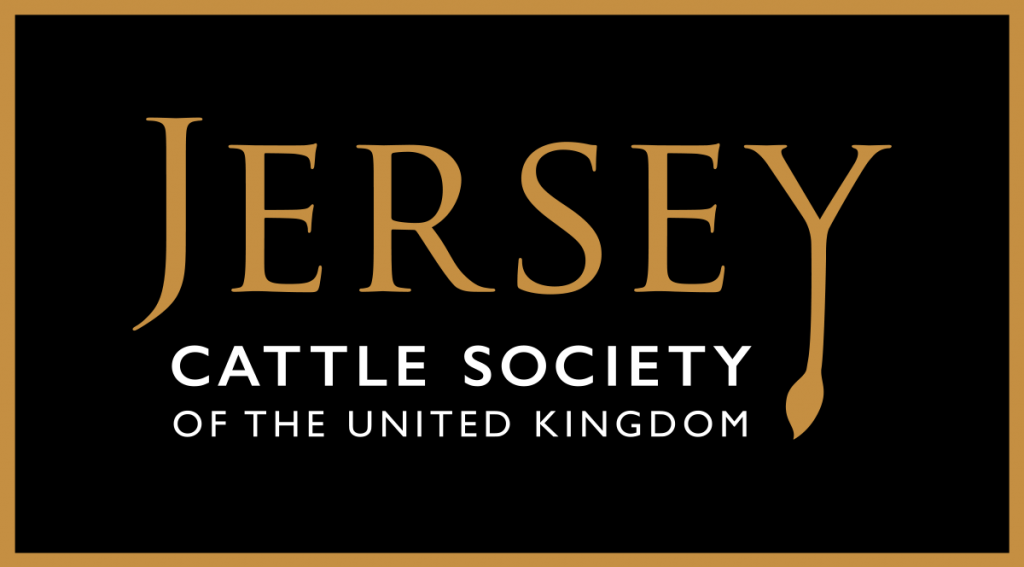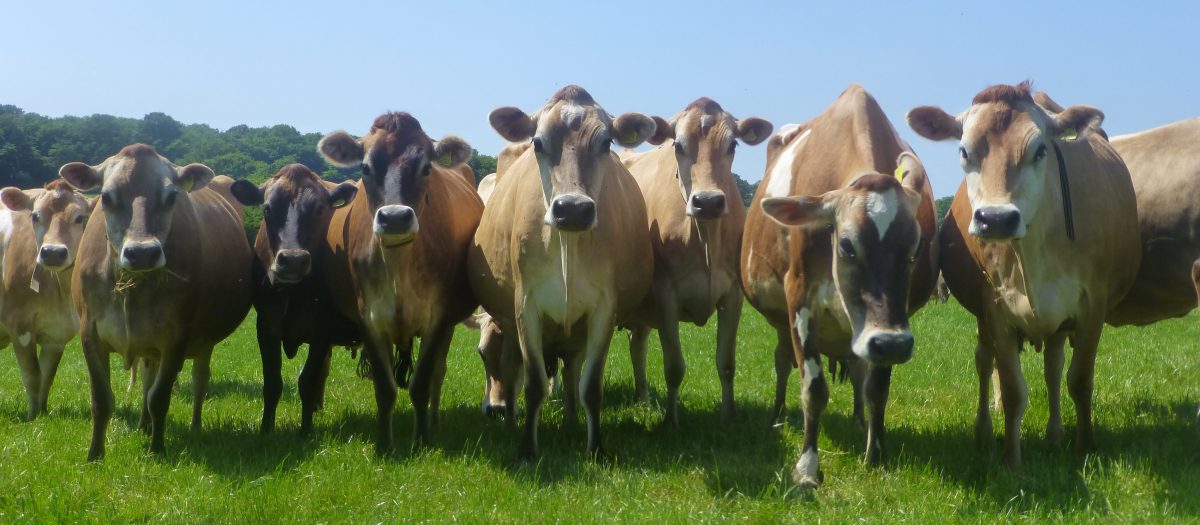
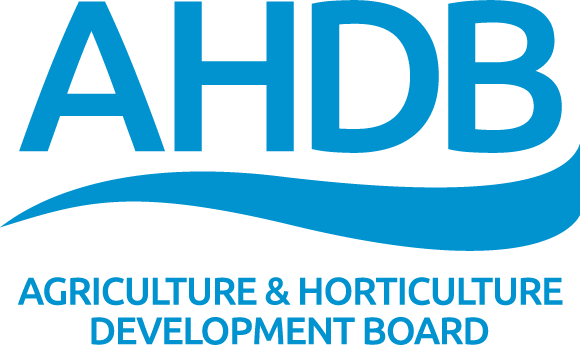
As featured in The UKJT March Edition, AHDB Genetics Manager Fern Pearston Explains the heritability of health and fitness traits and how selection for these traits could improve herd management.
Health and fitness traits are often overlooked due to their lower heritability but these traits can be improved on farm by selecting the right sires to use on your herd, in addition to improved management techniques. After all, improved genetics for these traits will make management of the herd easier and who wouldn’t want that?
The story so far…
The Somatic Cell Count (SCC), Lifespan and Fertility indexes have been available for use in bull selection for a number of years, however the trends found when looking at pedigree Jersey cows show not all of these traits appear to have been considered when selecting bulls.
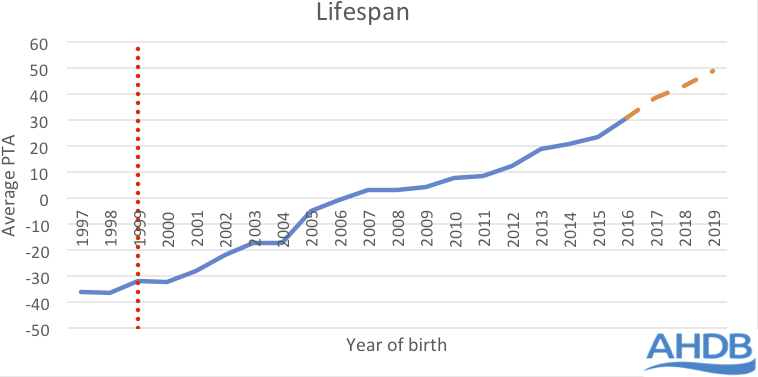
Figure 1A: Average Lifespan PTA for UK pedigree Jersey cows grouped by year of birth. 
Figure 1B: Average SCC PTA for UK pedigree Jersey cows grouped by year of birth. 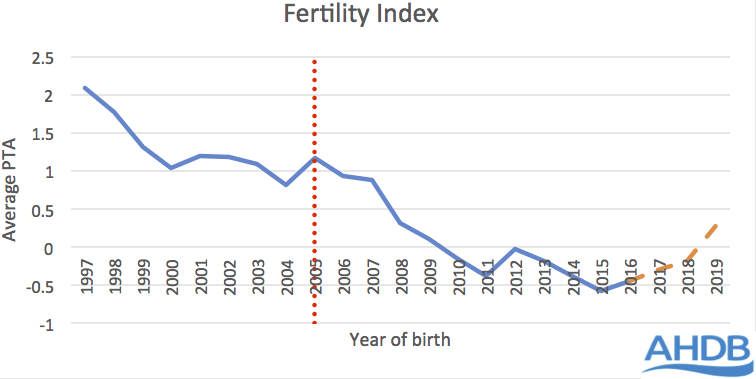
Figure 1C: Average Fertility Index PTA for UK pedigree Jersey cows grouped by year of birth.
Figures 1A, 1B and 1C show the trend for pedigree Jersey females in the milking herd (represented by the solid line) and young females yet to join the milking herd (represented by the dashed line). The vertical dotted lines indicate the year these indexes were made available for selecting bulls.
The milking cow Predicted Transmitting Abilities (PTAs) are based on on-farm and milk records, whereas the young animals have their PTAs based on parent average calculations. Please note, 2019 is not a complete data set, so is an indication of this birth year.
Genetics for Lifespan in the national herd shows an improving trend (Figure 1A).
Lifespan improved by 30 days between 2006 and 2016, that’s one month more in lactation on average! This continues to improve with the young animals entering the herd in coming years.
SCC has fluctuated over the last two decades, peaking in 2015 at +1% (Figure 1B). PTAs greater than zero are unfavourable for SCC and indicates that this PTA has not be consistently selected for in the national herd. The positive story here is that the most recent years of breeding look as though the focus has changed to improving SCC genetics with 2017, 2018 and 2019 animals on average below zero for SCC, reducing cell counts in the national herd.
Figure 1C shows the national trend for Fertility Index. Again, over the last 20 years, this trait has worsened in the national herd but looks to have made a turn for the better in the last few years of breeding with 2019 animals expected to have improved genetics for fertility than the breed base of zero. Increasing the Fertility Index of the national herd will result in reduced calving interval and improved non return rates.
Keeping the progress going
Are there bulls on the market to keep the positive trends for SCC and Fertility Index moving in the right direction? AHDB recommends selecting bulls who rank in the top half of the available list for your calving system then look within this shortened list for bulls who meet your herd’s specific breeding criteria.
Table 1 lists the average for the top 50% of daughter proven and young genomic Jersey bulls for the above three traits. (This example is based on Profitable Lifetime Index (£PLI) which is recommended for all year round calving herds.)
Table 1. Average Predicted Transmitted Ability (PTA) for the top 50% of daughter proven and young genomic Jersey ranked on £PLI for SCC, Lifespan and Fertility Index.
| Trait | Daughter Proven Bull Average | Genomic Young Bull Average |
|---|---|---|
| SCC | -7 | -8 |
| Lifespan | 75 | 70 |
| Fertility Index | 1.4 | 0.3 |
On average, both the daughter proven and young genomic bulls offer the genetics to continue improving these trends for the national herd.
- For SCC, on average, daughter proven bulls in the top 50% would transmit a 7% reduction in cell counts and the average young genomic bull would offer an 8% reduction compared to the breed base of zero.
- Bulls in the top 50% daughter proven and young genomic lists are, on average, offering over 75 days and 70 days more Lifespan, respectively, than the breed base.
- In the case of Fertility Index, the daughter proven bulls in the top 50% of the £PLI ranking will on average improve FI by 1.4 points compared to the breed base. The average for the top 50% of young genomic bulls is around the same level as 2019 born females, however there will be bulls in the top half of the young genomic £PLI list which will be able to improve this trend for the national Jersey herd.
More recently, breeding indexes to help address mastitis, lameness and calf survival on farm have been released. The Mastitis index was released in April 2017 and is useful to use alongside the SCC index to identify bulls who will improve cell counts as well as reduce cases of mastitis in your herd, as there are some which address one but not both traits. As with SCC, negative Mastitis PTAs are favourable with a 1% drop in Mastitis PTA indicating 1% drop in cases of mastitis per lactation.
Lameness Advantage and Calf Survival were both released December 2018. Breeding for positive figures in Lameness Advantage will help to reduce cases of lameness in your herd. Based on on-farm recordings of lameness in addition to type classification data and Digital Dermatitis records, this index will help to breed for improved foot health in your herd, where with each 1% increase in Lameness Advantage, 1% fewer cases of lameness per lactation will occur, on average.
Calf Survival is another index where positive figures are favourable. This index is based on BCMS records between tagging and 10 months of age. By breeding from bulls with positive Calf Survival PTAs you will increase the probability that more of your youngstock will survive to 10 months of age, increasing the number of heifers to breed from and bring into the herd as replacements.
Tools to help
All of the traits discussed above are included in the UK national economic indexes; Profitable Lifetime Index (£PLI – for all year round calvers), Spring Calving Index (£SCI – for spring block calvers) and Autumn Calving Index (£ACI – for autumn block calvers). More information on each trait and the UK national economic indexes can be found on the AHDB website: http://dairy.ahdb.org.uk/technical-information/breeding-genetics/useful-resources-related-information
The economic index which best suits your calving pattern should be used as an initial filter for bull selection, selecting the top 50% of the list, before drilling down further into the proofs to ensure bulls meet the specific traits to meet your breeding goals.
Health and welfare traits should be part of your herd breeding strategy. AHDB’s Breeding Trait Selector helps prioritise which traits to focus on for the coming breeding season: https://breedingdairy.ahdbdigital.org.uk/breedingtraitselector
National trends are a great way to get an overview of how the breed is going but to get a better idea of how health and welfare traits look for your herd use the Herd Genetic Report, available through AHDB to all herds fully milk recording in the UK. The report shows how your herd is progressing for these traits genetically and areas you might like to focus more on when selecting the next bulls to use on your herd. To sign up for the Herd Genetic Report complete the form at http://dairy.ahdb.org.uk/technical-information/breeding-genetics/herd-genetic-reports/register-for-the-herd-genetic-report
Final thoughts
Health and welfare traits are heritable and so can be improved in your herd through breeding. Buying straws from a bull with genetics who will improve your herd health is often the same cost as buying a bad genetic bull, so the real money saving is in the long run when you have more fertile, longer living and healthier cows. Historically, health traits, with the exception of Lifespan, in the national Jersey herd have not been improving but the latest years of youngstock show that there has been a change in breeding priorities.
Genetic progress is cumulative, building over each generation as long as good genetics for health traits continue to be used. It’s therefore important to keep health and welfare traits in your breeding goals, using tools freely available to you, to ensure that these positive trends continue to improve for generations to come.
